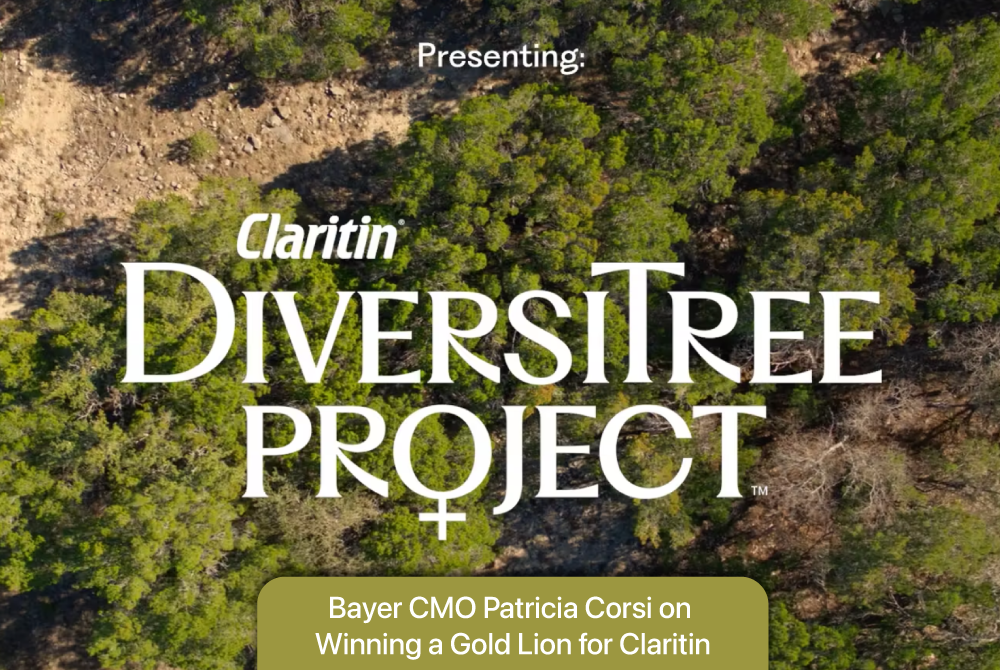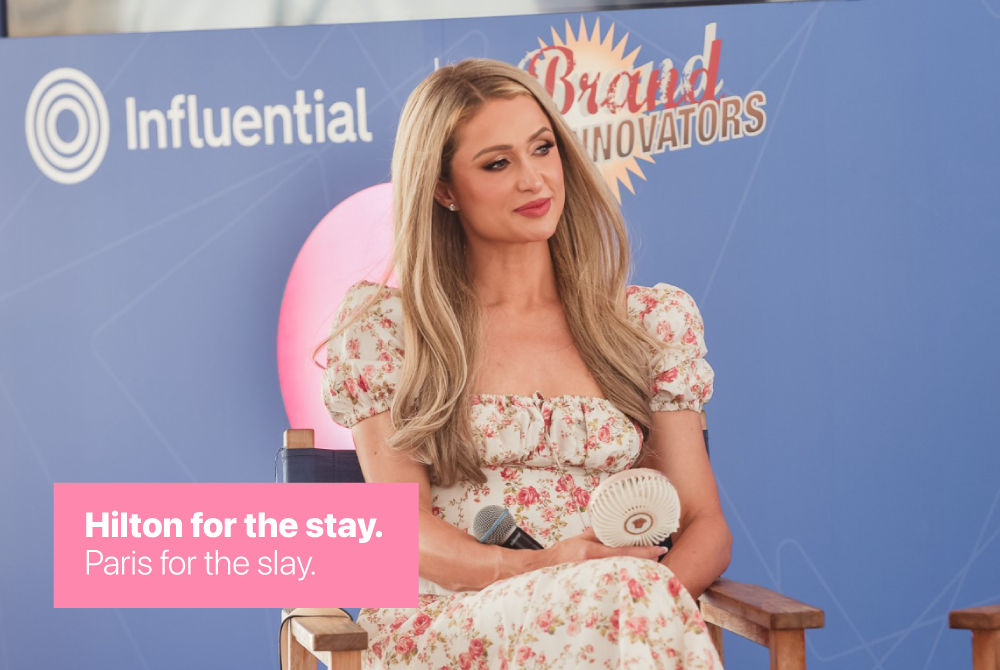For those of us in marketing, there’s really nothing quite like Cannes. Beyond the great food, rosé and sheer beauty of the South of France, there is no other event that brings together as many of the world’s top marketers as Cannes Lions. This year, Brand Innovators along with Influential, took over the beach that Twitter had occupied for years. Additionally, Brand Innovators announced that they would be merging with what was formerly called the CMO Club. which only extends and elevates what was already a huge marketing community. With that as the backdrop, we heard from CMO’s from some of the top brands in the world, including Raja Rajamannar from Mastercard, Mark Pritchard from P&G, and of course my old peeps from IBM and Unilever.
As always, the festival provided an opportunity for industry talent to showcase their creativity, share insights, forge partnerships and hear about the emerging trends that will shape the future of this business. This year’s key themes were personalization, DE&I, CTV, Immersive technologies, Data & Purpose. But the talk of the town, up and down La Croisette this year, was Generative AI. It came up in about 90% of the sessions I attended. There were hundreds of sessions on these key topics, many of them great, but the following highlights a few of what I thought were the most interesting and unique, along with my take on the subjects:

Generative Artificial Intelligence
It seemed as if everyone thought AI was a new thing. It is not. When I was at IBM several years ago, we worked on and created some incredible AI programs years before this, using Watson technology. For example, we created 1) sizzle reels for Wimbledon by having Watson create highlights by recognizing when players pumped their fists 2) a dress for the Met Gala by having Watson gauge fashion trends and 3) even here in Cannes, way back in 2016, we had Watson scrape people’s social media feeds to hand them their favorite drink as they walked in. And broadly, while people may not even realize it, Watson has been enhancing our experiences in the background for years.
With that in mind, I went to an IBM session at BI’s Armani Café to listen to IBM chief creative officer, Billy Seabrook and IBM CMO Karen Feldman talk about what IBM is doing now in the AI space. Billy spoke of how they’ve advanced their use of AI by “using Watson for content generation. And then, once the content is created, using it to automate and personalize customer experiences.” He also spoke of using analytics platforms to monitor performance, and then turning the insights into creative briefs”.
But now, with the hype cycle and fear around ChatGPT, it seems that everyone is trying to figure out how to work with OpenAI, or whatever new start-up in the field to get engaged in generative AI for marketing. But in my view, with all the experience Watson has and their long-held approach to data protection and security, IBM would be the place I’d go to first… and I’m saying this, even though I’ve long since left Big Blue!:-)
DEI
It’s clear marketers are now on the front lines of dealing with the politicization of seemingly everything. Grappling with tough questions around a slew of DE&I related cultural issues highlighted by the recent bud light/transgender campaign. Brands know that diversity, equity, and inclusion initiatives can drive success, but implementing those strategies can be tricky. We saw a number of solid campaigns, but I thought one stood out as particularly creative and unique.
Denise Vitola, vice president of brand integration, social/influencer, Bayer, showcased a diversity program for the allergy brand Claritin. A program that won a Cannes Lion for what they called the Claritin “Diversitree.” The premise of this campaign was based on the insight that trees have genders (who knew??). There are far more male trees than female trees, and apparently male trees give off tons of pollen (female trees don’t give off any), which of course cause allergies. So Claritin proclaimed, “we have to stop this tree inequality” and started an influencer campaign where they had influencers plant female trees in different places, starting in Richmond Virginia, which is one of the worst US cities for allergies, with the goal being to reduce pollen levels. Their influencers talked about how more female trees make a better outside for all.
This is a great combination of experiential, influencer marketing, gender equality, and of course has a direct link to the brand. Win, win!

Modern Marketing
There were a lot of conversations around today’s best practices in marketing, especially in lieu of the cookie deprecation and IDFA issues. Many discussions and questions related to the need for first party data, performance vs. brand, customer experiences, martech stacks, etc… There were far too many discussions on these subjects to summarize here, but I thought Ann Mukherjee, CEO Pernod Ricard and former marketing executive at PepsiCo, did a great job of simplifying their approach. Here is what she shared…
“We as brands are too worried about trying to do everything and developing “cool creative” on the newest channels and technologies.” She made the case that trying to do that makes it difficult to achieve the ROI you’ll need. She said, “you need to recognize that science should drive art. We have so much data today and predictive human behavior is how you do great marketing. So you need to understand the customer journey and path to purchase for your brand, and recognize that every brand has a different path. For us in the alcohol industry for example, 65% of all shopping decisions are pre planned. That fact alone starts the marketing journey earlier than some other categories.
Then when you create plans for each brand in the portfolio, you need to understand that they all address different occasions. For example, when you want to celebrate you look for champagne, when you want to impress you get a high end whiskey, when you want to party you go for beer, etc.. Every brand has a purpose in people’s life and as a result purchase decisions are based on those specific paths. Then when you recognize the consumer journey, you start making choices on how best to interact with them. This way you are addressing your consumers’ needs through science to create that incredible art of receptivity.”
Essentially, my take on this is that you need to capture data to understand key insights about your brand, then carefully understand the consumer journey, and build a martech stack that harnesses the data in a way that allows you to intercept people with creative, personalized messages at key points on their path to purchase (or whatever the key proxy metrics are).
On a more personal “cool Cannes story” note, Ann and I spoke together here at Cannes almost 20 years ago as we collected awards for the first ever consumer generated campaigns. She was working on Doritos at that time and I was on Dove. The industry has come so far in innovations since then, but it was almost surreal for me to see her on stage once again talking about another modern and innovative way to market. Just as all those years ago when we spoke on stage together, I couldn’t agree more with her approach.

CTV
New media channels such as TikTok and retail media networks came up quite a bit, but the bulk of the discussions were around streaming video. There was lots of talk from and about Netflix, Roku, Hulu, etc..but there was one conversation I found fascinating. Kara Swisher interviewed Telly CEO Ilya Pozin at Brand Innovators beach.
Telly is a free 4K television that’s “free” because of a secondary bottom display that will constantly rotate content such as news and sports scores, and advertising. Consumers answer some surveys and let Telly share your viewing habits with advertisers, and in exchange, you pay nothing for a 55-inch 4K TV that’s supposed to be the “smartest” tv on the market.
Historically, most of these type businesses have failed, but Ilya was the founder and CEO of Pluto TV as well, so has been successful in launching free ad-supported new models in the past. His belief here is that TV’s have been commoditized and you can’t make money on the hardware anymore, but you can from highly targeted advertising on a high quality, big screen. The TV is worth more than $1,000 and allows consumers to do more than just watch.
They can run a slew of apps, play music on Spotify, do Zoom calls and watch with friends and family who are elsewhere. While you’re watching TV, sports scores, news, weather, things that are really useful that people are typically distracted by on their phone, they’ll have right on their TV along with ads. You will be able to take action on the ads through voice activation. So for example, you can buy a pizza from Pizza Hut while watching a football game.
Conceptually it seemed great. It’s a captive audience, with targeted ads, the ability to buy, the smartest tv, doesn’t disrupt the content, it’s free, and has apps like Zoom built in so you can watch with friends. They are currently in 250k homes and it’s probably a long shot, but at the very least, it seems like something to keep an eye on…Stay tuned…
Overall, while not all the way back from pre-Covid, Cannes Lions 2023 got close. It continues to embody the spirit of creativity and innovation that the industry is known for. The festival highlighted how the marketing industry continues to drive positive change, foster inclusivity, and embrace emerging technologies. As the industry continues to evolve, Cannes Lions serves as an essential event for showcasing the most creative ideas and inspiring the next generation of creative leaders. Hope to see it come all the way back in 2024. Au revoir till next year…




